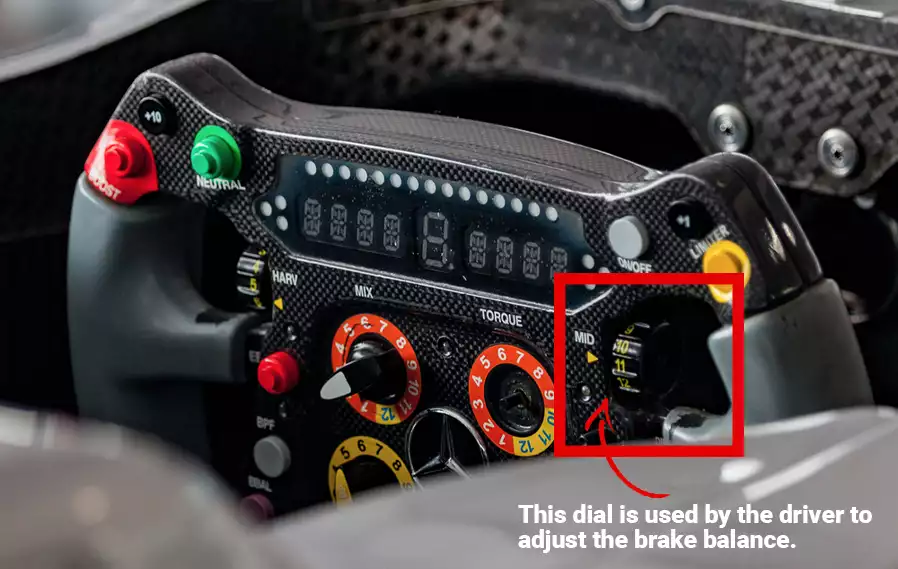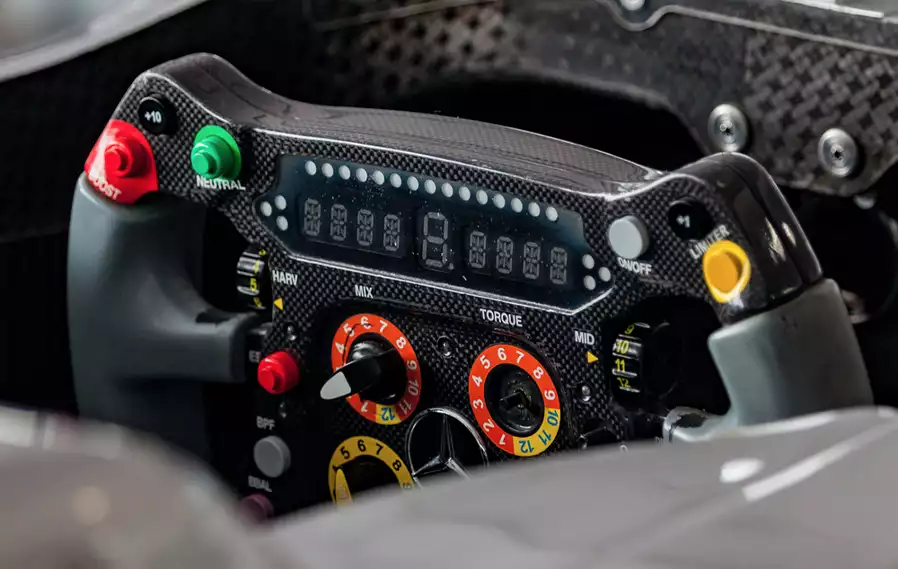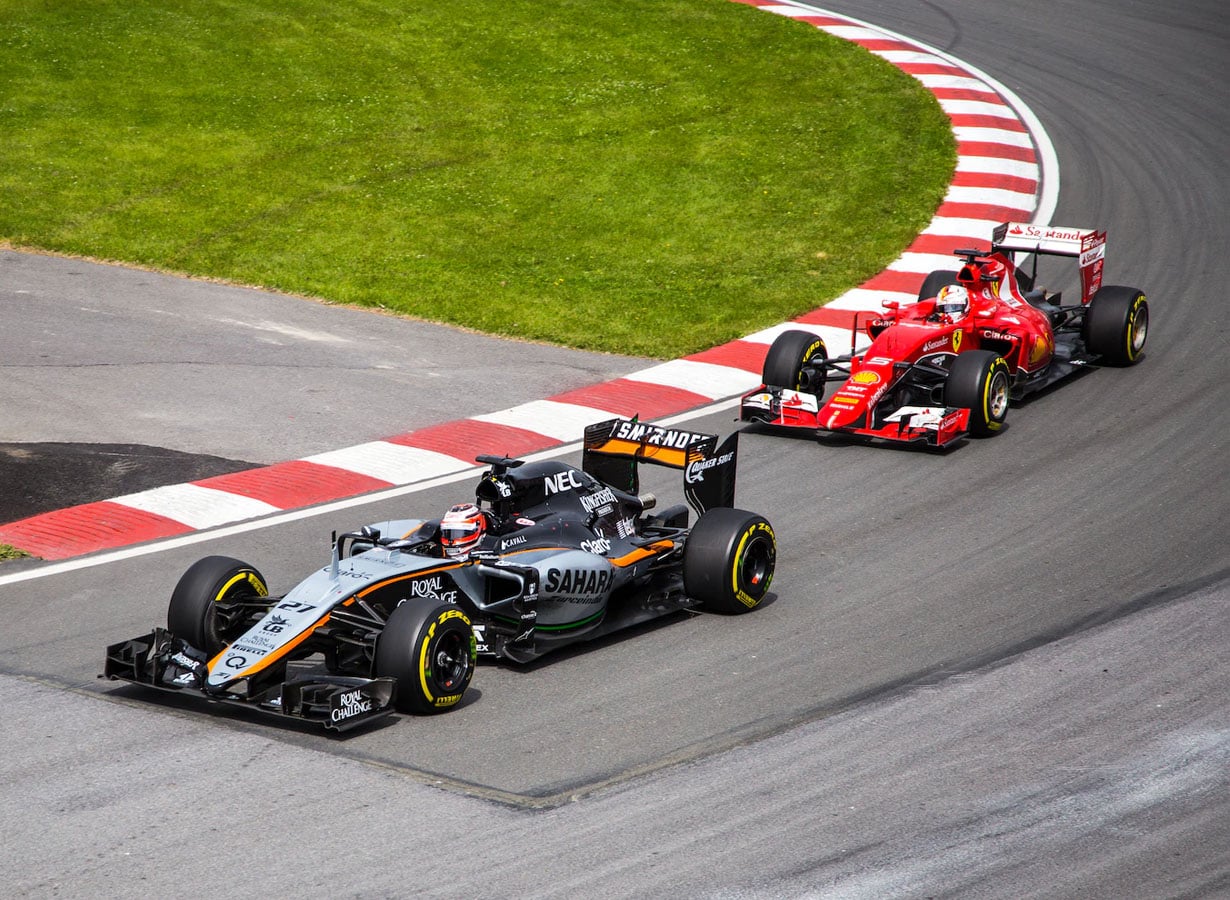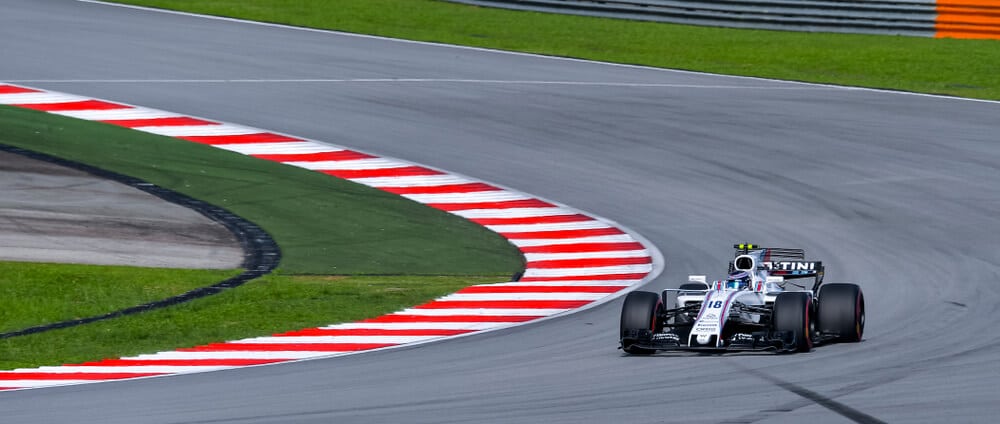One of the most important tools at a Formula 1 driver’s disposal is brake balance, which allows them to make on-the-fly adjustments to how the car handles under braking.
It’s one of those things that doesn’t get much attention, but it’s just as important to get right if a driver wants to perfect that qualifying lap, save tyres during a race, or outbrake their opponent into a hairpin.
Without further ado, let’s take a closer look at brake balance and how F1 drivers use it to their advantage.
Table of Contents
Watch this video to learn why brake balance in so important.
What Is Brake Balance?
Brake balance, also known as brake bias, is defined as the ratio of braking force between the car’s front and rear brakes.
It is typically expressed as a percentage and refers to the amount of brake force going through the front of the car. For example, if a Formula 1 car has a 55% brake balance, it means that 55% of the braking force is applied via the front brakes.
Key takeaways
Brake balance is typically set more to the front.
It is defined as the ratio of braking force between the car’s front and rear brakes.
Track conditions can have a significant impact on optimal brake balance
- Today, F1 drivers can adjust brake balance using buttons or knobs on their steering wheels.

Why Is Brake Balance Not 50%?
Because of how a car’s weight transfers during braking, brake balance is typically set more to the front.
Weight shifts from the rear to the front as the driver applies the brakes into a corner. This increases the grip of the front tyres while decreasing the grip of the rear tyres. Because the rear tyres have less grip, if we had a 50% brake balance, the rear tyres would be prone to locking up, potentially causing a spin.
The ideal brake balance that F1 drivers try to find is when all four wheels lock up at the same time. However, this is easier said than done because the optimal number varies depending on:
Track Conditions:
Track conditions can have a significant impact on optimal brake balance. The main distinction is between wet and dry driving, with wet driving requiring more rear brake balance than dry weather driving.
This is due to the drastic decrease in grip in wet weather racing, which causes drivers to be unable to brake as hard, resulting in less weight transfer to the front of the car.
Fuel Load:
The amount of fuel on the car is another major factor. At the start of the race, when the car has 140kg of fuel in the tank, the brake bias can be set more to the front than if the car had less fuel.
This is due to the tank being in the back of the car, which increases weight transfer during braking, giving the front tyres more grip to handle the more forward brake bias.
Type of Corner:
Another consideration for drivers is the type of corner they are approaching. Corners with more braking require a more forward brake balance because there is an increased weight transfer to the front, whereas the opposite is true for corners with less braking.
The ideal brake balance that F1 drivers try to find is when all four wheels lock up at the same time.
How Is Brake Balance Adjusted?
For years, drivers could adjust the balance by turning a knob in the cockpit, which drove a flexible cable that moved a pivot on a balance bar to a different position, changing the brake balance. The driver had to reach down into the cockpit, usually with their left hand, and turn the knob.
Today, F1 drivers can adjust brake balance using buttons or knobs on their steering wheels, which are controlled by an electronically controlled servo-system. However, rules state that adjustments cannot be made while the brakes are applied, as this would constitute active brake balance.
How Can Brake Balance Be Used to Affect Car Balance?
Based on what you’ve learned thus far, you can probably guess that brake balance can influence whether the car experiences understeer or oversteer.
And your guess is correct. In fact, adjusting the brake balance is one of the few ways a driver can change the handling of their car without returning to the pitlane.
As a rule of thumb, more forward brake balance causes understeer at corner entry, while more backward balance causes oversteer. The ability to change the way a car behaves on the fly can be very useful, especially during a race where drivers switch to different compounds and conditions change.
Drivers frequently change their brake bias throughout the race, sometimes even corner to corner.
Brake balance is a rarely discussed concept in Formula 1, but it is just as important for the driver and team to get right if they want to win races.
It’s a game of compromise, just like any other setup change, and those who find the right compromise will have an advantage that can ultimately mean the difference between winning and losing.
Frequently asked questions about Brake Balance
Do F1 Drivers adjust brake balance?
What does brake bias/balance mean in F1?
Learn more about Formula One
Want to learn more about F1? Then visit our Formula 1 glossary and dictionary.




